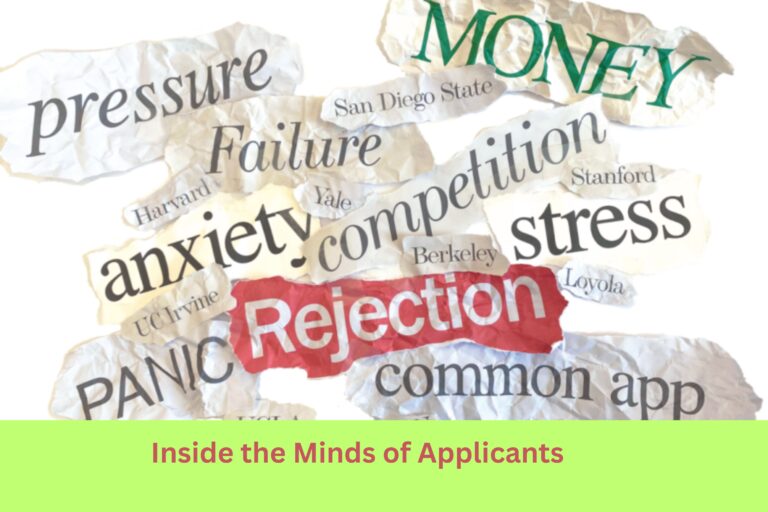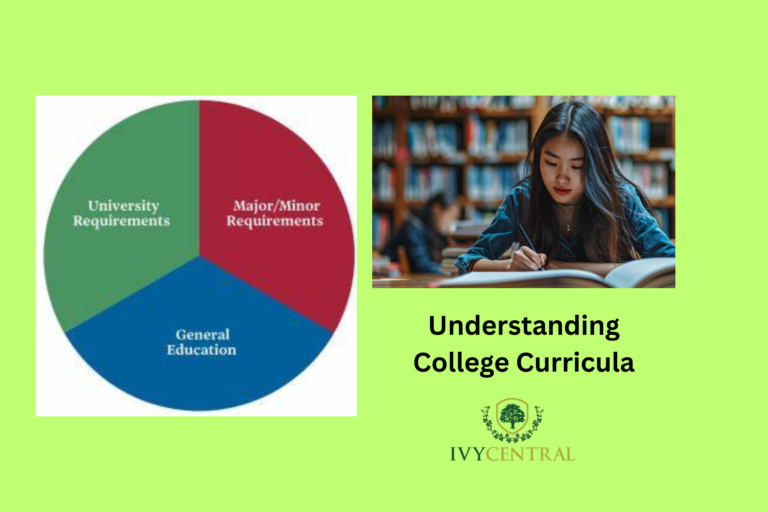What are Applicants stressing about?
The Princeton Review’s 2025 College Hopes & Worries Survey, conducted in early 2025, offers a glimpse into the aspirations and concerns of college applicants and their parents. The number of respondents who participated in the survey was 9,317. This report sheds light on the current sentiments prevalent in the college admission landscape. Earlier this year, the Common App revealed that applications are up 7% this year (up 3% to private institutions and 11% to public institutions). Undoubtedly, there is an increased level of stress among applicants that is doubled by the worries about paying for college, since the cost of attendance is at an all-time high.
This blog breaks down the key findings of the report for its readers.
Dream Colleges
Respondents were asked to answer the question- “What ‘dream college’ do you wish you (your child) could attend if acceptance and cost weren’t issues?”
The names of more than 165 institutions were entered as their “dream colleges.”
The 10 schools most named by students surveyed this year as their “dream college” were :
- Massachusetts Institute of Technology
- Harvard College (MA)
- Stanford University (CA)
- Princeton University (NJ)
- Yale University (CT)
- Columbia University (NY)
- New York University
- University of Michigan–Ann Arbor
- University of Pennsylvania
- University of California–Los Angeles
The 10 schools most named by parents surveyed this year as their “dream college” for their children were:
- Princeton University (NJ)
- Massachusetts Institute of Technology
- Stanford University (CA)
- Harvard College (MA)
- Yale University (CT)
- University of Michigan–Ann Arbor
- Columbia University (NY)
- Duke University (NC)
- New York University
- University of Texas–Austin
Among students, Harvard University emerged as the top dream college, while parents favored the Massachusetts Institute of Technology (MIT)
The points of concern apparent through the survey reveal that the majority of respondents’ worries are common to almost all of them.
Major Concerns
1. The application process is stressful:
The college application process is undeniably stressful—nearly 73% of respondents rated their stress level as “High” or “Very High.”As counselors, we work closely with students and families throughout this journey and witness firsthand the anxiety it brings. From identifying the right-fit colleges and finalizing an Early Decision (ED) school to crafting compelling essays and ensuring all components of the application are in place, every step can feel overwhelming. The drop in acceptance rates adds to the strain.
2. High need for financial aid:
According to the survey, 98% plan to apply for financial aid. 48% say aid is “Extremely” necessary. Over the past few decades, the cost of attending college in the United States has risen significantly at both public and private institutions, which has increased the financial burden on families. According to data from the College Board, the average cost of attendance at a four-year private college has more than doubled since the early 2000s. With operating costs having increased, even in-state public universities, once seen as affordable options, have seen steep hikes.
3. Student Debt is a matter of top concern:
38% worry most about paying off college debt, up from just 6% in 2003. Only 29% worry about not getting into a first-choice college. This shift highlights how the rising cost of higher education has reshaped family priorities, with financial burden now outweighing traditional concerns like college acceptance.
4. Standardized Testing Still Matters:
92% plan to take the SAT or ACT, and 47% believe scores improve admission chances. SAT is preferred over ACT (48% vs 11%), with 33% taking both.
While the COVID-19 pandemic led many colleges to adopt test-optional policies, standardized testing remains a significant part of the admissions landscape post-COVID. Most of the top colleges in the U.S. are now reinstating testing requirements to ascertain the strength of the applicant. Notably, nearly half believe strong scores can still enhance their applications, especially for competitive colleges and scholarships. Standardized testing, therefore, continues to be seen as a valuable tool for standing out in a crowded applicant pool.
5. Relevance of College:
46% say the main benefit of a degree is a better job and income, while 29% value exposure to new ideas and people. For many, college is seen as a pathway to financial stability and career advancement. Many value the broader experience, gaining exposure to new ideas, diverse perspectives, and building meaningful connections. This shows that while practical outcomes remain important, a significant number of students and families also appreciate the personal and intellectual growth that comes with a college education.
6. What drives college choice?
47% prioritize overall fit. Only 11% say affordability is the key factor. Interestingly, these statistics suggest that students and families are looking beyond rankings or cost alone, aiming to find a place where the student will thrive personally and academically. Families say that while cost is a concern, the value and experience of college often outweigh the price tag in final decisions.
7. Is College Worth It?
A resounding 99% believe college will be worth the investment. This last response sums up the sentiments of parents. Despite all the above concerns, respondents still believe that college is worth the investment. There is a consensus that the long-term value of education cannot be underestimated. It stems from the deep-rooted belief that better education comes with a promise of better employment and opportunities. It contributes to personal growth, expanded horizons, and the foundation it provides for a successful future.







